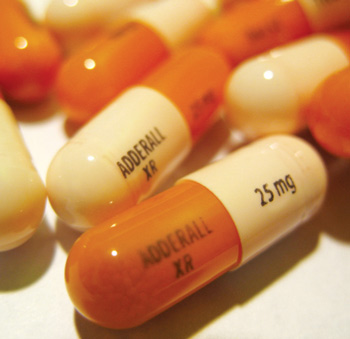When I was in elementary school in the 1970s, I was friends with a boy who was considered hyperactive, which I vaguely understood to mean that he had excess energy and was therefore not supposed to eat sugar. He was occasionally disruptive in class and often had trouble focusing on group activities. My friend seemed to be constantly in motion, bouncing up from his chair during spelling tests and sprinting through the playground at recess, unable to keep still or remain quiet for any length of time. Another classmate, a girl, was a year older than the rest of us because she had been held back to repeat a grade for academic reasons. She was “slow,” a term we used at the time to refer to someone with a cognitive developmental disability.
If these two were growing up today, there’s a good chance they would be diagnosed with an attention disorder and medicated with a drug such as Adderall or Concerta. While A.D.H.D. has been around for awhile—it’s been listed in the Diagnostic and Statistical Manual of Mental Disorders in some form since at least 1968—its incidence in children has skyrocketed over the past few decades. As Alan Schwarz reported several months ago in the New York Times, the number of children taking medication for A.D.H.D. has increased from 600,000 in 1990 to 3.5 million today, while sales of stimulants prescribed for the condition rose more than fivefold in just one decade, from $1.7 billion in 2002 to nearly $9 billion in 2012. And researchers recently identified a new form of attention disorder in young people. Called “sluggish cognitive tempo,” it’s characterized by daydreaming, lethargy, and slow mental processing. It may affect as many as two million American children and could be treated by the same medications currently used for A.D.H.D.
This apparent epidemic of behavioral disorders in children highlights the convergence of a number of factors. In the late 1990s, changes in federal guidelines allowed the direct marketing of drugs to consumers, prompting increased awareness of disordered behaviors such as those which characterize A.D.H.D. Pharmaceutical companies routinely fund research into illnesses for which they manufacture drug therapies. As Schwarz (again) found, some of the chief supporters of sluggish cognitive tempo have financial ties to Eli Lilly; the company’s drug Strattera is one of the main medications prescribed for A.D.H.D. At the same time, overworked teachers in underfunded school districts lack the capacity to give special attention to rambunctious students, and instead urge parents to medicate them to reduce conflict in the classroom. Most important, the definition of what constitutes “normal” has narrowed. Thirty years ago, my unruly friend who wanted to run around during reading time and my absentminded classmate who forgot to write her name on her tests fell toward the extremes on the spectrum of normal behavior. Today they might be diagnosed with A.D.H.D. or sluggish cognitive tempo and given medication to make them less rowdy or more focused.
Normal childhood behavior these days means paying attention in class, answering all the questions on tests, turning in homework on time, and participating in classroom activities in a non-disruptive way. Children today, in short, are expected to be compliant. There will always be those who lack the ability to conform to an ever-constricting range of what constitutes normal behavior. For families with the access and the interest, pharmaceutical companies offer drugs designed to bring these young people within a threshold of what we consider acceptable.

